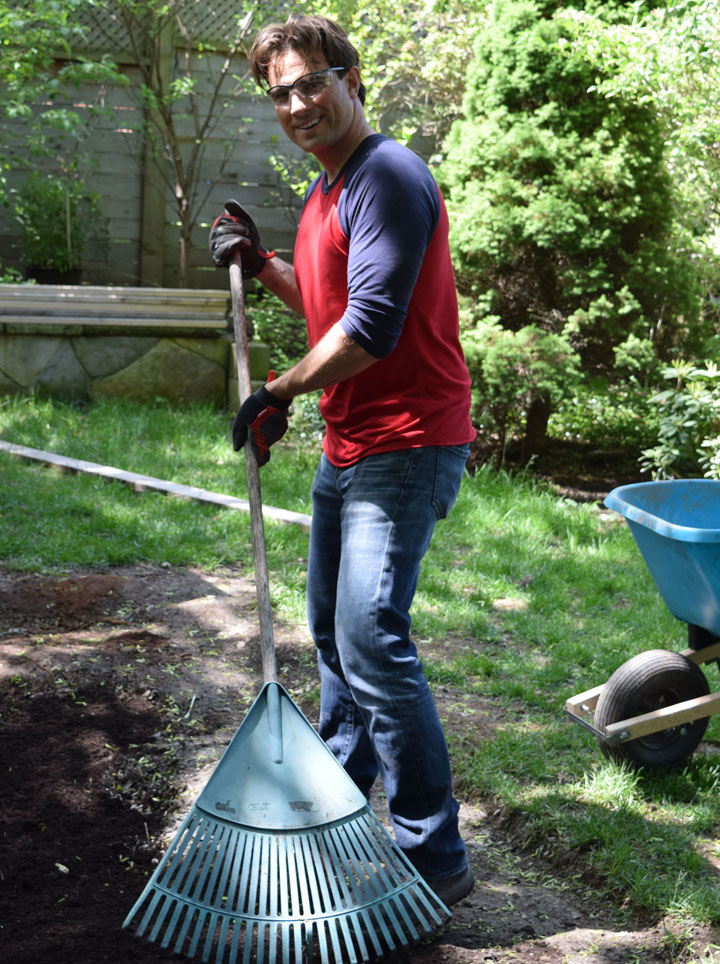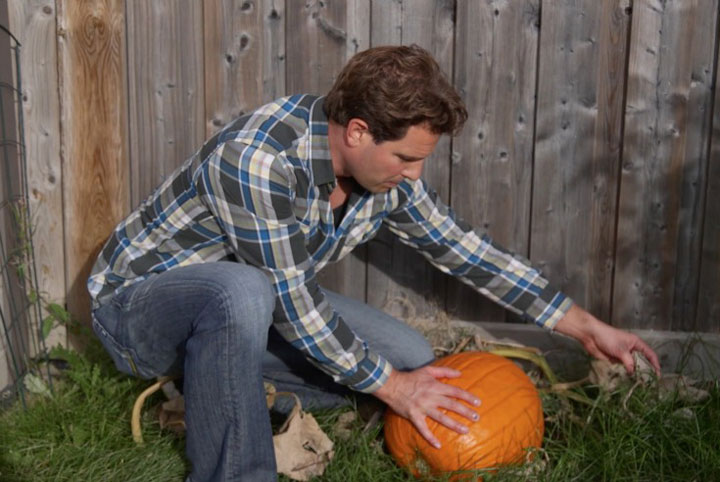
Scott McGillivray is a real estate expert and host of HGTV Canada’s Income Property and Moving the McGillivrays.
I’ve been interested in gardening for a long time, and since having kids I’ve gotten even more gung ho. I don’t just want my kids to eat healthy foods, I want them to learn about where food comes from and the work it takes to grow and harvest it.
Every year we have a big, healthy garden that provides us with plenty of fresh fruits and vegetables. And part of that success is due to the work we put in at the end of the previous season. How you prep your vegetable garden for winter has a lot to do with the quality of garden you’ll get next year. So if you want to have a thriving vegetable garden in the spring you need to start now.

Harvest Everything
As the season winds down make sure to harvest and preserve everything you can. For some gardeners by this point the novelty has worn off and they get lazy, but I like to keep the garden going as long as possible. I harvest everything I can for as long as I can. And remember that if you’ve got more vegetables than you can eat, you can always take the extras and donate them to a food bank or shelter. There’s no need for good food to go to waste.
Winter Survival Tips: 20 Hacks to Keep Your Houseplants Alive During the Winter.
Clean Up
Once you’re sure that everything has been harvested, remove all the dead vegetation. This includes dead plants and any rotten fruits and vegetables you may have missed. Then pull and remove all the roots. Most of this can go into the compost, but if you notice anything covered in mold or mildew it’s best to put it out with the trash. Depending where you live your compost may not get hot enough to destroy disease or fungus. Also, if you have a watering system now is the time to turn it off and disassemble it for the season.
Turn the Soil
Once I remove everything I like to turn the soil. It loosens everything up (meaning it will drain better), it kills any remaining roots or weeds and it also mixes the nutrients. There are a lot of debates about whether or not turning the soil actually helps, but it’s always worked well for me.
Be Warned: 20 Things That Attract Bad Bugs Into Your House and Yard.
Add a Layer of Compost
Once the beds are cleared of dead plants and the soil has been turned, add a light layer of mulch or compost. This will help to suppress weeds, protect the soil and also supply it with nutrients. But don’t make it too thick or it might prevent the soil from freezing in the winter (which will help kill any pests or diseases). 1-2 inches is enough. The idea here is to protect what’s going on underground during those cold winter months.

Take Notes
One of the most important steps – that most people don’t do – is taking notes on what successes you had during the season. I always jot down what I planted, what did well, how much I harvested, etc. Sometimes I get overexcited and plant too much, other times I plant a ton and don’t get a great return. And because my garden is organic, I’m always experimenting with different products and techniques. If you want to have a successful crop next year, don’t skip this step.
For more great tips from Scott on gardening, real estate and income properties, visit the Scott McGillivray host hub.
HGTV your inbox.
By clicking "SIGN UP” you agree to receive emails from HGTV and accept Corus' Terms of Use and Corus' Privacy Policy.



